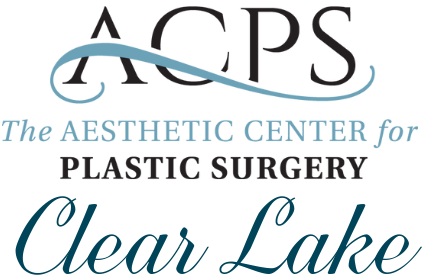Surgery Can Be Dangerous
Safety is always our first concern for procedures done at ACPS Clear Lake. Unfortunately, that is not always the case in the realm of cosmetic surgery. There are a number of issues plaguing the practice these days that have brought numerous patients to our doorstep looking to repair damage done in another office.
“Any licensed physician can call himself or herself a plastic surgeon or, for that matter, a neurosurgeon or a psychiatrist. That’s the law,” according to Gerald Imber, M.D., in a recent publication of Departures Magazine.
“It’s been left to hospitals to determine who is trained to do what,” he said. “But cosmetic procedures usually don’t take place in the hospital, and there is often no oversight at all.
“Patient safety,” Imber added, “as differentiated from the quality of the results, is generally lax when individuals perform procedures for which they are not adequately trained.
“The best is available,” he said, speaking of board certified plastic surgeons, “why would anyone settle for less?”
At ACPS, we are often led to ask the same question. Why settle for ineffective, sometimes dangerous procedures done by inadequately trained personnel often in an unsafe environment?
The magazine went on to look at three popular procedures that are risking the lives of patients: buttocks enhancement injections; surgery under sedation, rather than general anesthesia; and a form of facelift meant to cut corners and reduce downtime.
An astounding number of patients are showing up in emergency rooms following botched treatments for these types of issues. All sorts of substances have been injected into the buttocks (and elsewhere) of unsuspecting patients, for instance, leading to bacterial infections and other reactions. Fat transfer and gluteal implants are the only treatments considered safe for augmenting this part of the anatomy.
Then there’s the issue of sedation versus anesthesia. Breast augmentation, liposuction and even facelifts while sedated have been marketed as superior because the patient can participate, giving his or her opinion on implant size, for example.
“It’s a gimmick being promoted to appeal to people who fear anesthesia,” said Michael McGuire, M.D., a director of the American Board of Plastic Surgery. “Standing someone up who’s under a lot of sedation — to me, that’s absurd, it’s malpractice.”
The reality is these are surgical procedures best completed under general anesthesia by a trained professional. At ACPS, we take as much time and effort as necessary to make sure the patient, Dr. Hustak and Dr. Wentworth, and the surgical team work together to achieve the desired results. There’s no need for the patient to give an opinion while under the effects of sedation.
The final treatment is the Thread Lift, being marketed recently as a way to reduce downtime and cost. Barbed sutures are sewn under the facial tissues to grab and lift sagging skin.
“Thread lifts appear to be DOA,” said North Carolina plastic surgeon Felmont Eaves, M.D. “The vast majority of surgeons who tried them have abandoned them, believing they lacked predictability, and the results, if any, were very transient.”
Better to undergo a facelift in the hands of a board certified, experienced plastic surgeon who can give you the results you seek with as minimal a downtime as possible — giving you better, longer-lasting results.
The most important aspect of seeking a cosmetic procedure is selecting a surgeon and a surgical facility. Do your homework — not only on the doctor with whom you’re consulting and their surgical privileges, but also on the procedures that might best give you your dream look.
We have a number of resources available for patients seeking to learn more about a surgeon or facility on our Website.



